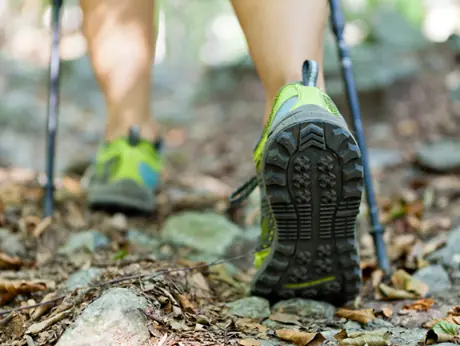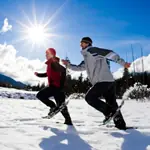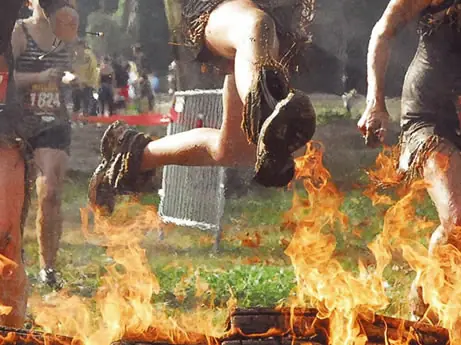2. Cardio Blast
Why it works: Jogging and hiking uphill increases your leg strength and improves your cardiovascular fitness level while burning fat; which is a win-win. For each incline grade, you will burn up to 10 percent more than you normally would on a flat surface. Increase that incline level to three, and you'll burn up to 30 percent more.
How it's done: Gradually run uphill at a strong but comfortable pace. You can gauge that pace as breathing hard, but still being able to say a few short phrases or words. While running you want to make sure you keep your chest lifted and your shoulders relaxed and down. This will help you conserve energy and not cause unnecessary tension to other areas of your body. On steeper inclines, change your pace to a quick walk using longer strides. If the route you take has only one or two hills, repeat this process a few times: Run or walk the hill, jog back down, then take the incline again. The goal is to climb the hill at least four times.
More: Coach Jenny's Tips for Running Hills
3. Power Up, Sprint Down
Why it works: Doing squats, lunges, and other strength moves uphill, and then running downhill helps you get a balanced lower-body workout. Uphill exercises target the glutes, calves, and inner and outer thighs, and running downhill works your quads. An extra tip: Managing uneven ground as you descend helps improve your balance and coordination.
How it's done: As you approach a hill, perform one of these strength moves: push-ups or triceps dips, power squats or alternative lunges. Then run down the other side of the hill (or the same side). If the climb is long enough, perform 20 reps of each exercise on the way up the hill or as you get to the top.
Running or hiking doesn't have to be a ho-hum experience. Use these tips to get a full-body workout, and turn a normal hiking trail into an outdoor playground.
More: The Incline Full-Body Workout
 Increase your metabolism and tone up faster. Find a fitness class.
Increase your metabolism and tone up faster. Find a fitness class.
- 2
- of
- 2
About the Author

Get ACTIVE on the Go


Couch to 5K®
The best way to get new runners off the couch and across the finish line of their first 5K.
Available for iOS | Android








Discuss This Article